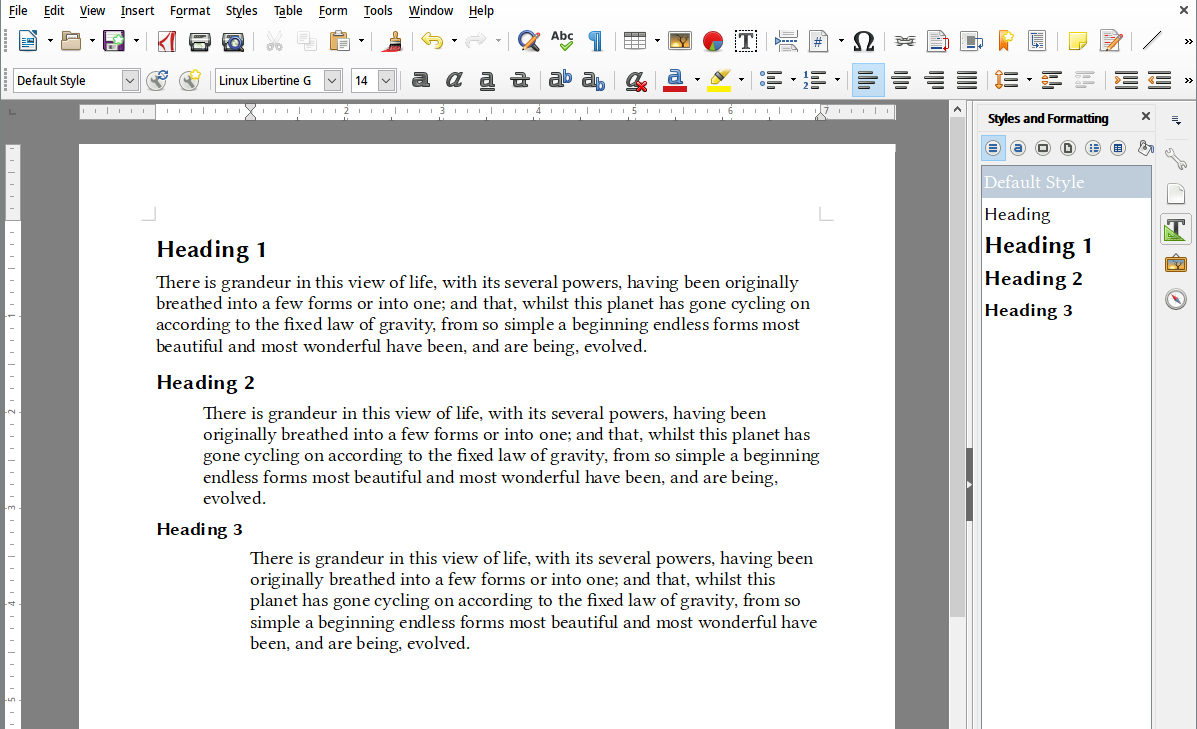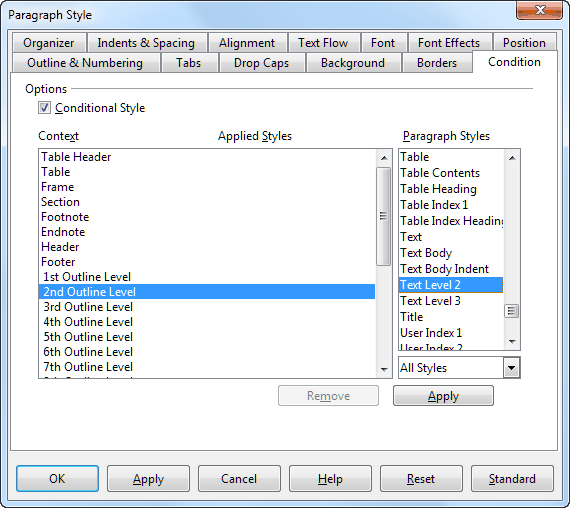Frequently asked questions - Writer
TDF LibreOffice Document Liberation Project Блоги сообщества Weblate Nextcloud Redmine Ask LibreOffice Пожертвования
Как адаптировать представление текста в зависимости от структуры?
Вы хотите, чтобы текст сдвигался автоматически в зависимости от уровня структуры. Пример такой структуры:

Получить этот автоматический эффект можно, используя Условные стили.
Эта функциональность позволяет одному стилю иметь атрибуты другого стиля в зависимости от контекста.
Например, при использовании в заголовке страницы стиль Основной текст может получить атрибуты стиля типа Заголовок. Само собой разумеется, что именно такое "экстремальное" использование не рекомендовано из-за путаницы, которая обязательно возникнет. Однако, эта функция вполне подходит для автоматического отступа, который мы хотели бы получить здесь.
В этом примере текст будет использовать только один условный стиль (названия используем Заголовок1, Заголовок2 и Заголовок3 соответственно).
Применяемый стиль текста автоматически адаптируется к контексту: когда текст находится на "уровне 2", применяется некий предопределенный внешний вид в ином стиле. То же самое относится к уровню 3 и т.д.
Это очень удобно, потому что Вам не нужно беспокоиться о внешнем виде при вводе текста: Вы выбираете "условный" стиль, а при применении названий внешний вид изменяется сам по себе.
Для этого примера Вы должны создать два стиля : Текст уровень 2 и Текст Уровень 3 (имена можете задать, какие Вам удобно), которые являются "обычными" стилями абзаца, только с заданными отступами перед текстом. Эти два стиля не применяются непосредственно в документе.
These two styles are not directly applied in the document.
Step two: create one conditional paragraph style
Now we create the conditional paragraph style that will be applied to the text following these steps:
- in the Styles & Formatting panel ( ▸ ▸ or press F11), right-click on the Text Body paragraph-style, then chose New;
- under the Organizer tab, give a name to the style;
- under the Condition tab, check Conditional Style;
- in the Context list, select 2nd Outline Level, in the Paragraph Styles chose Text Level 2;
- click on Apply and then OK; and
- repeat the previous step for the third level with the style Text Level 3.

Step three: modify the heading styles
You can update the title styles "Heading 2" and "Heading 3" to assign them an indentation (0.5 and 1.0).